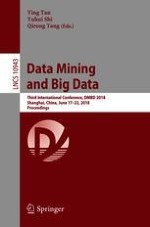2018 | OriginalPaper | Buchkapitel
A Self-training Method for Detection of Phishing Websites
verfasst von : Xue-peng Jia, Xiao-feng Rong
Erschienen in: Data Mining and Big Data
Aktivieren Sie unsere intelligente Suche, um passende Fachinhalte oder Patente zu finden.
Wählen Sie Textabschnitte aus um mit Künstlicher Intelligenz passenden Patente zu finden. powered by
Markieren Sie Textabschnitte, um KI-gestützt weitere passende Inhalte zu finden. powered by
